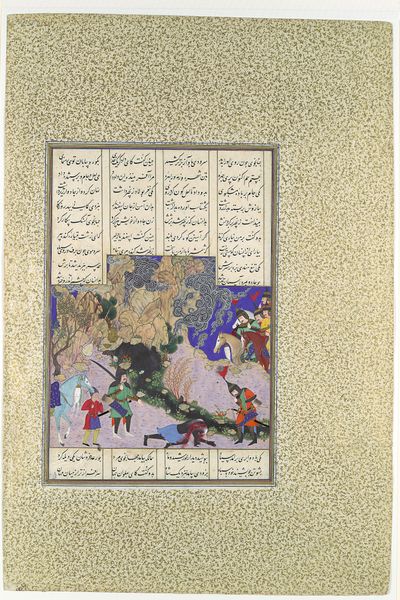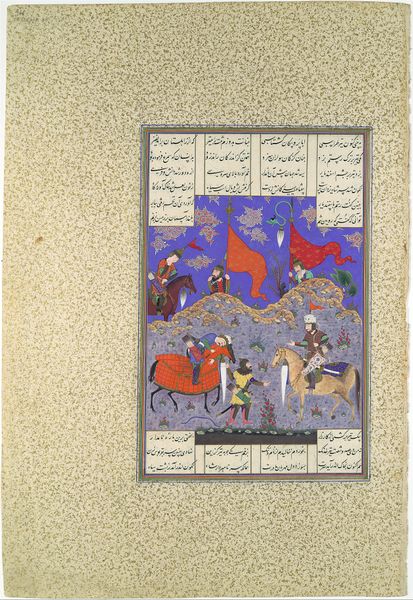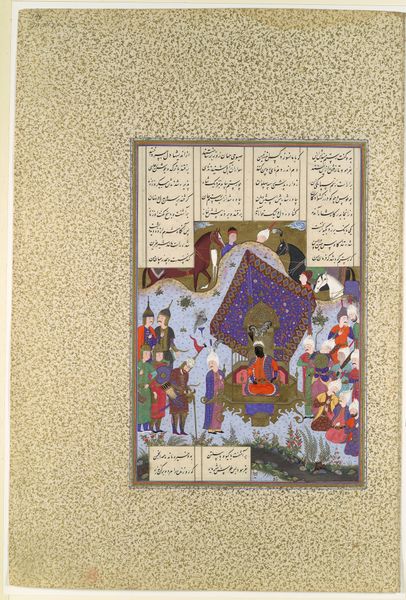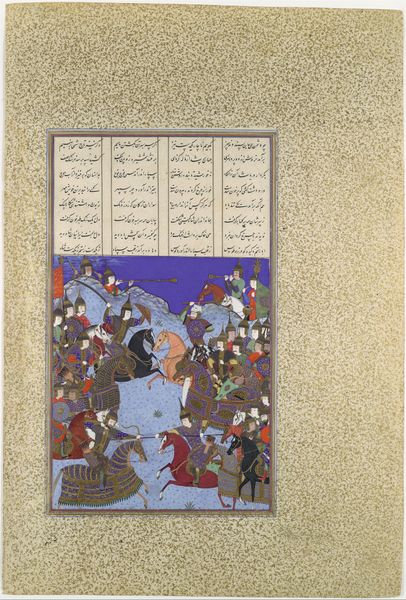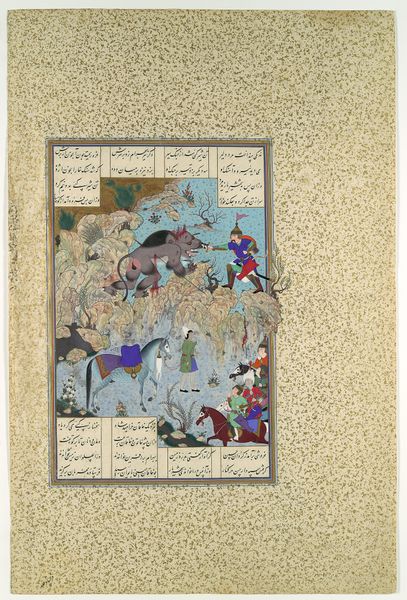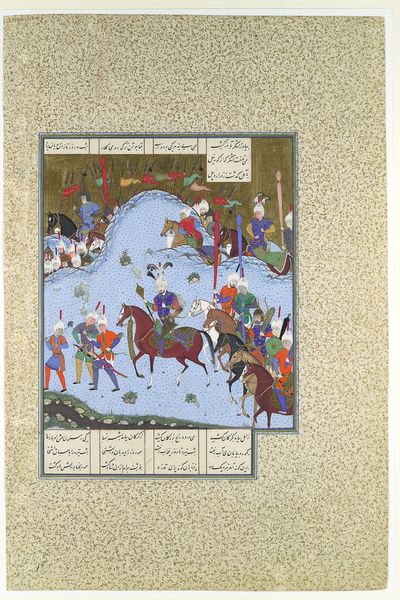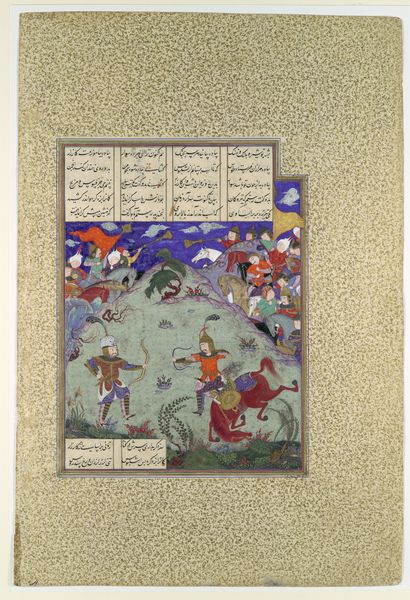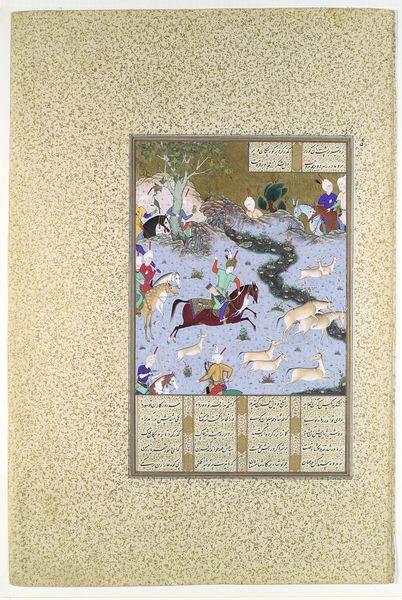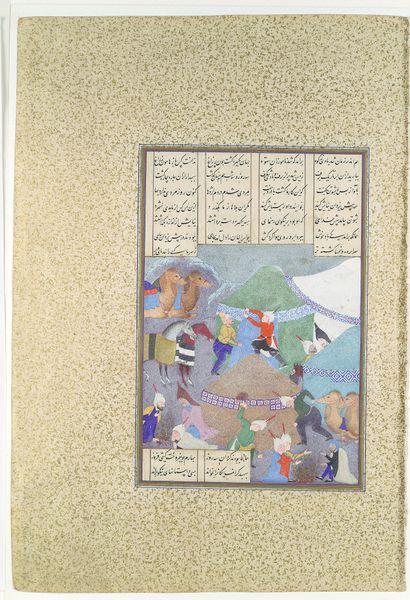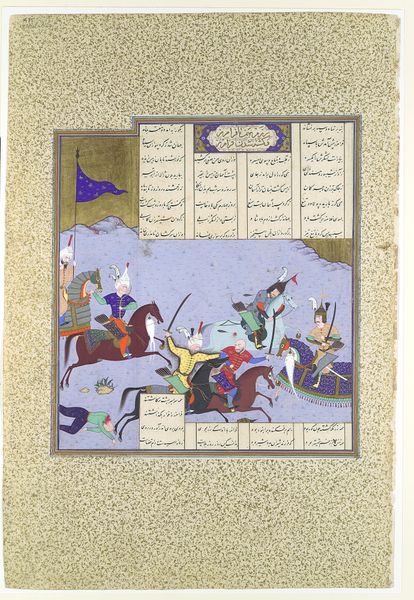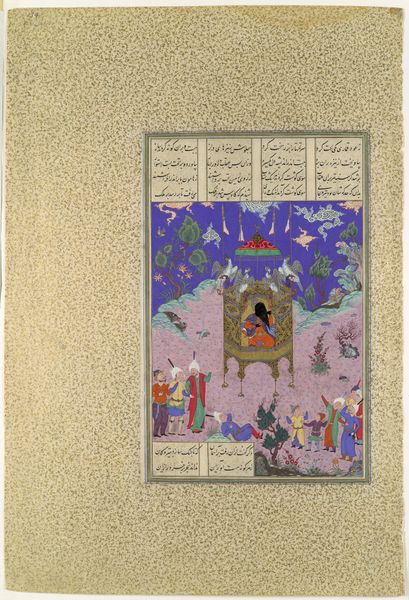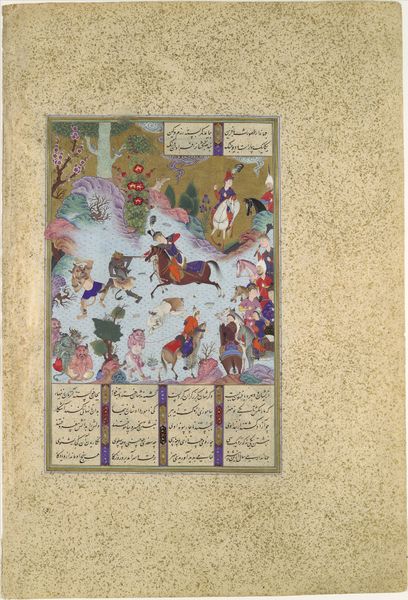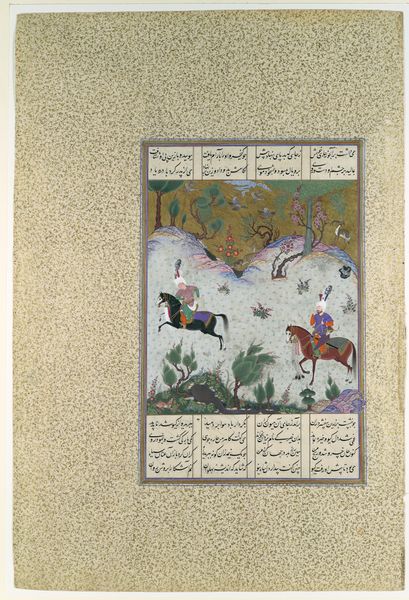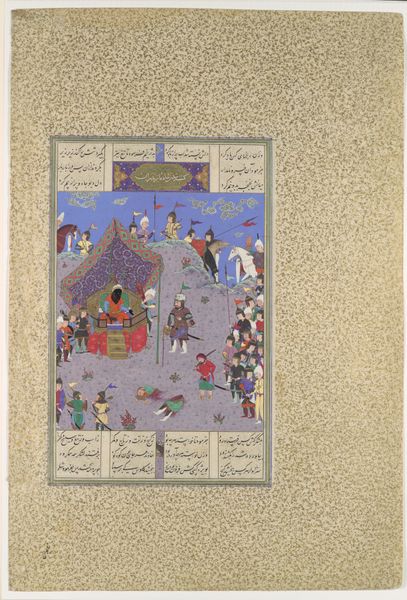
"The Khaqan Captive Before Bahram Gur", Folio 578r from the Shahnama (Book of Kings) of Shah Tahmasp 1505 - 1560
0:00
0:00
painting, watercolor
#
narrative-art
#
painting
#
watercolor
#
horse
#
men
#
islamic-art
#
history-painting
#
miniature
Dimensions: Painting: H. 7 11/16 in. (19.5 cm) W. 6 11/16 in. (17 cm) Entire Page: H. 18 5/8 in. (47.3 cm) W. 12 1/2 in. (31.8 cm)
Copyright: Public Domain
Editor: This vibrantly colored miniature, “The Khaqan Captive Before Bahram Gur” from the Shahnama of Shah Tahmasp, was created sometime between 1505 and 1560 using watercolor. It has an almost dreamlike quality despite depicting a scene of captivity. What historical context shapes how we should view this image of power and submission? Curator: Consider the role of the Shahnama itself, or Book of Kings. It’s not just pretty pictures, but a national epic, commissioned by the Safavid Shah Tahmasp to solidify his rule by connecting him to a glorious, pre-Islamic Persian past. The power dynamics within the image itself are also at play culturally. How does depicting a defeated ruler before the Persian hero reinforce Safavid authority? Editor: So, the image isn't just about the story itself, but also about presenting the Shah as a continuation of a heroic lineage. Is the captivity more of a political statement than a factual recording? Curator: Exactly. Look at how Bahram Gur is positioned on horseback, elevated, while the Khaqan is brought before him as a prisoner. The power dynamic is clear but also performative. How does that performativity itself tell us about Safavid society’s own codes of honor and dominance? How were ideas of legitimate rulership being negotiated in the 16th Century? Editor: So the act of depicting this scene reinforces the Shah’s power not just through the story, but also through the very act of its commissioning and display? It shows more than tells, it would seem. Curator: Precisely. And how these narratives play out within collections, impacting viewership. What do audiences perceive? How do historical images become politicized? Editor: I hadn’t considered the implications beyond the narrative itself. Now I see how the creation and display contribute to the construction of power. Thank you. Curator: Indeed, considering the full scope of this piece’s commission and context helps shed light on cultural power and historical intent.
Comments
No comments
Be the first to comment and join the conversation on the ultimate creative platform.
